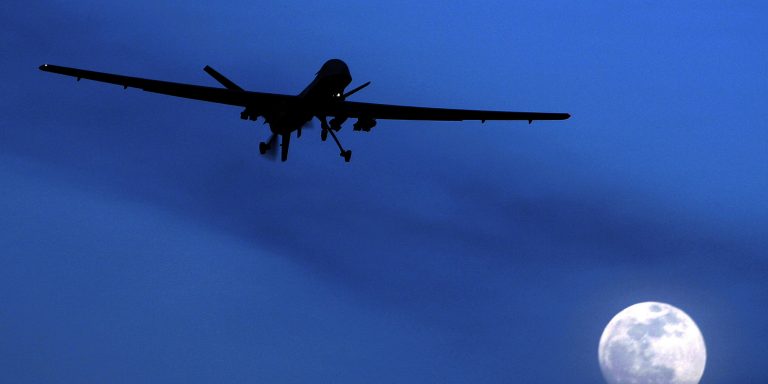INTELBRIEF
February 14, 2019
IntelBrief: Civilian Casualties and the Struggle for Transparency

- A partially declassified study of U.S. military operations demonstrates the difficulty in accurately counting and mitigating civilian casualties.
- Disparities exist between official Pentagon estimates of civilians killed and those done by external agencies, leading to assumptions about the former being less transparent.
- The study reiterates the claim that the U.S. military considers it a high priority to minimize civilian casualties that occur on the battlefield.
- Policies like ‘signature strikes,’ in which demographic factors drive targeting cycles, obfuscate civilian deaths and make accurate assessments impossible.
.
Since 2001, the U.S. has waged ground wars in Afghanistan and Iraq while also waging an ongoing and seemingly-without-end global ‘war on terror.’ To wage those wars, thousands of airstrikes by both manned planes and unmanned drones have been conducted even beyond Iraq and Afghanistan, including in Pakistan, Somalia, Syria and Yemen. These airstrikes have attempted to serve as a substitute for a more robust ground presence, which, among other benefits, protects U.S. military service members from greater harm. For years, the U.S. touted the numbers of ‘militants’ killed in these strikes while external agencies decried a mounting toll of civilian deaths. In the cases where the Pentagon did acknowledge responsibility for errant strikes that killed and maimed civilians, they often followed lengthy and cumbersome denials and heavily caveated official statements.
There are vast differences between civilian deaths the Pentagon has acknowledged, and numbers reported by other organizations. For example, in late January 2019, the Pentagon officially acknowledged 1,190 civilians killed by U.S. airstrikes in Iraq and Syria since 2014. For the same time period, Airwars, a well-respected external organization that specializes in counting civilian casualties, report that at least 7,200 civilians were actually killed. How can these estimates be so far apart?
In a notable step toward establishing greater procedures for transparency and accountability in recording civilian deaths resulting from U.S. airstrikes, the Pentagon has been studying the issue for more than a year. On February 4, the Washington Post reported details about a recently completed study which was partially declassified. The report proves that the issue of civilian casualties (CIVCAS) has become a major priority for senior officials. This appears particularly true over the past two years, when the U.S. dramatically increased the scale and scope of its strikes in the mission to counter terrorists and insurgents after President Trump promised to loosen the rules of engagement—under the new rules, troops were no longer required to be in contact with enemy forces before opening fire. The redacted report looks at the strikes conducted in the U.S. Central Command and U.S. Africa Command, the two combatant commands where airstrikes are heavily concentrated. The study looked at the years 2015 to 2017, meaning the massive spike in 2018, and the resulting high toll of civilian casualties, is not covered in this report. There is a comprehensive effort in the Pentagon to articulate a new CIVCAS policy aimed to be formalized as early as this year.
The partially declassified report’s first and ‘overarching finding’ states that 'data from January 2015 to December 2017 indicate there have been temporary increases in the confirmed number of civilians killed and wounded over time.’ The report also concludes that the delegation of targeting engagement authority was not a major factor leading to an increase in CIVCAS during Operation Inherent Resolve, the anti-ISIS campaign in Iraq and Syria. The report reiterates that the U.S. military considers it a high priority to minimize civilian casualties. The report notes that there is ‘clear written guidance and oversight regarding civilian casualty mitigation for deliberate and dynamic strikes.’ There is still confusion over what the military considers an ‘acceptable number’ of civilians put at risk from a strike, a number sometimes referred to as the ‘non-combatant value.’
Further muddling the issue of CIVCAS is the targeted assassination of terrorists using pattern of life analysis, a term which refers to the specific behaviors and movements associated with a particular entity over a given period of time. Also known as ‘signature strikes,’ these attacks involve targeting an individual or individuals based on patterns of routine or daily activity by a person or group of persons, typically military age males, that are engaging in behaviors often associated with militant or terrorist activity. Different forms of intelligence can be used to corroborate or triangulate pattern of life analysis, but the concept itself remains highly controversial given its lack of transparency. The families of civilians that might be killed in this manner often have few means and resources to seek justice or an explanation of why a loved one was killed by a missile launched from an unmanned aerial system, or drone. In a reversal of transparency and accountability, in late 2018 the Pentagon stopped releasing information on the locations and timing of strikes in Syria; this makes it far more difficult, if not impossible, for outside agencies to accurately document civilian casualties. Better sharing of information and policy transparency is not just morally correct, but would help the Pentagon limit civilian casualties, an aim it purports to support.
.
For tailored research and analysis, please contact: info@thesoufancenter.org
[video width="960" height="540" mp4="https://thesoufancenter.org/wp-content/uploads/2019/02/IB-0214.mp4" poster="https://thesoufancenter.org/wp-content/uploads/2019/02/AP_915761441397.jpg"][/video]